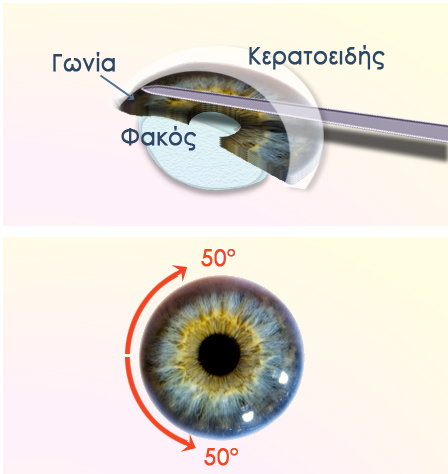The treatment of glaucoma in childhood is mainly by surgery.
Although there are many modern drugs for the regulation of intraocular pressure and the control of glaucoma in adults, these drugs do not appear to be as effective in children.
The treatment of glaucoma in childhood is mainly by surgery. Its purpose is to reduce the intraocular pressure in physiological limits, preventing further damage to the optic nerve. Unfortunately up to that time the damage to the optic nerve is irreversible and vision (with the form of visual field deficit) is lost and cannot be reset.
The goniotomy is consisted in the internal opening angle, i.e. the drainage of the aqueous humor, whose increased pressure causes glaucoma. The opening in this example is about 100ο
The most common surgery for glaucoma is called goniotomy. In this operation the surgeon uses a special knife and opens the internal angle at the meeting point of the cornea and iris and throughout the region (360ο). The opening is made in one part of the angle (in the example of the image 100ο in total, with a 50ο movement of the special knife in one direction and 50ο degrees to the other).

The goniotomy is consisted in the internal opening angle, i.e. the drainage of the aqueous humor, whose increased pressure causes glaucoma. The opening in this example is about 100ο
Sometimes the cornea may be clouded, and thus the surgeon does not have the visibility to perform the goniotomy, so accessing the corner and the opening is made externally with other techniques, such as trampekoulotomi and trabeculectomy. All three interventions are designed to improve the drainage of the aqueous humor and decrease the intraocular pressure.
 German
German Ελληνικά
Ελληνικά